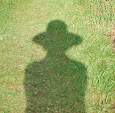Some books are to be tasted, some digested, some put aside after only a few pages. However once in while a book along comes that demands immediate re-reading... and this is definitely one: The Hare with Amber Eyes by Edmund de Wall.
Having just finished it I now want to take my time and go through it
again. There are many levels of interest (which is what I like in a book). The book is basically a memoir - it is not a novel - of one man about his family. It reads easily which is surprising as the subject matter deals with big topics of history and emotional upheaval.
The title is taken from a small figure carved out of ivory. What is it? Why was it made and by whom?
It is a piece of Japanese netsuke or carved figure used as a toggle on a
cord to hold household keys or perhaps a purse of money. But that is
just a detail. A collection of these little figures forms the basis for
this story, i.e. the writer inherited a collection of these and in the book he follows the trail of where these figures arrived in his family and by what means and what happens to them. The trail
goes to Paris, Vienna and Tokyo and we are taken through periods of history as seen through the fortunes (and there were vast fortunes) and misfortunes of this wealthy family.
Netsuke I do not have nor covet. Things Japanaise have never attracted me as they did Europeans in mid to late 19th century Europe. However looking at my dish that is a repository for my keys I am aware that I can make one small nod in the direction of a netsuke-wannabe by way of a chestnut ("conker" as they say here) which I made as a sort of key-ring. I made a hole in the conker and put a piece of string through it to attach the front door key. My 'netsuke' is shiny from use and is about the size he is talking about.
So on one level that is what the story is about ... but that is just handle on which he addresses many other themes. One such theme is aesthetics.
The original collection of netsuke the author inherited was started by one of his relatives a few generation back (i.e. his great-great-uncle Charles Ephrussi) and, as the story unfolds, we learn that he is the man in the black frock coat and top hat in this Renoir painting called Luncheon of the Boating Party, 1880.
The first part of the book is about Paris salon life in 1880s as seen through this man's role as a leading art collector and editor of Gazette des Beaux-arts. (Furthermore, it seems he was the model for Charles Swann in Proust’s Remembrance of Things Past.)
The book is full of these sort of references and relationships, i.e. artists and paintings that we can recognize. Therefore in the book we are given one particular point of view which relates to the stories surrounding these artists.
So I am going to take my time with my iPhone handy to look at images of the paintings referred to and also look up words! The web has lots of material relating to the subject matter in the book. I even discovered the National Gallery has produced a rather large version of this book which includes images. The Gallery shop that sells it is here.






No comments:
Post a Comment